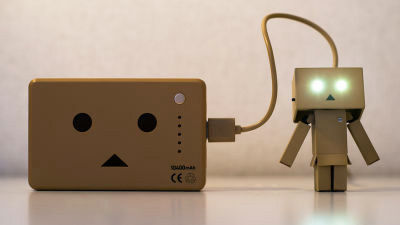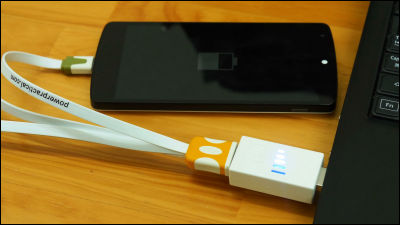A YouTuber actually tested the question, 'Does fast charging drain smartphone batteries?'

While most smartphones these days support some kind of fast charging standard, there's a common myth that fast charging drains smartphone batteries. Gadget YouTube channel
Is Fast Charging Killing the Battery? A 2-Year Test on 40 Phones - YouTube
Testing Whether Fast Charging Kills Smartphone Batteries, And Other Myths | Hackaday
https://hackaday.com/2025/11/10/testing-whether-fast-charging-kills-smartphone-batteries-and-other-myths/
While fast charging has become commonplace in the smartphone industry, there's still a persistent belief that fast charging drains smartphone batteries.
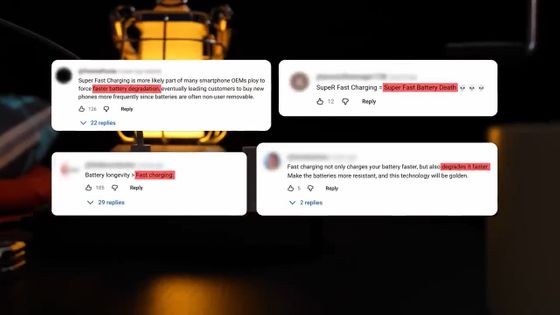
Some people also claim that it is best to start charging when the battery is about 30% full and stop charging when it is about 80% full.

So HTX Studio conducted an experiment to find the answers to these questions.
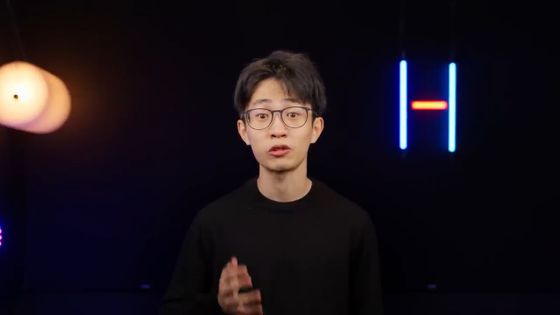
First, we prepared six iPhone 12s and divided them into a 'fast charging group' and a 'slow charging group.'
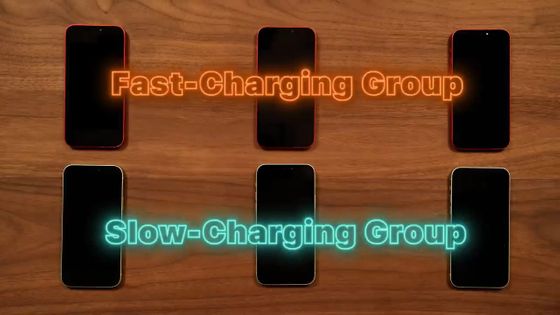
Next, we measured the battery capacity of these smartphones and installed an app called 'Discharge Loop.'

When the discharge loop app is launched, it starts a program that discharges the phone's battery. When the battery drops to 5%, the app sends a signal to a relay connected to the charger, which starts charging.
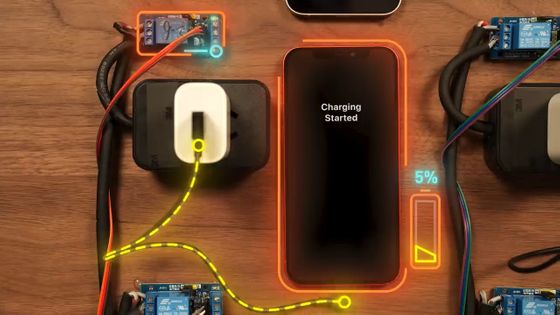
Then, once the battery reaches 100%, the app will send a signal to stop charging and run the discharge program again, repeating this cycle over and over again.

Each attempt charges and discharges approximately 95% of the battery capacity, which counts as 0.95 cycles, and the test ends when the total number of cycles reaches 500.
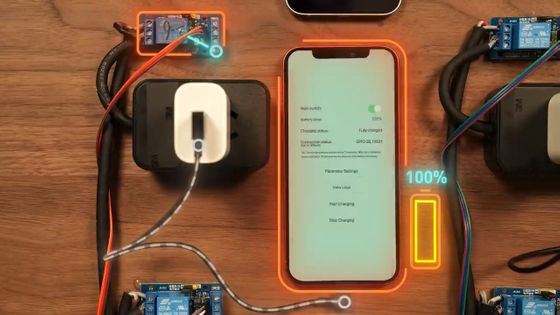
The battery capacity was then measured again at the end of the 500 cycles to see how much battery wear differed between the fast-charging and slow-charging groups. If the fast-charging group showed more capacity loss than the slow-charging group, this would confirm the theory that 'fast charging wears down the battery.'

In addition, three other iPhone 12s were prepared for the experiment and assigned to a 'group that charged and discharged between 30% and 80%.' Since these charged and discharged about 50% of the battery capacity in one trial, this was counted as '0.5 cycles,' and the trial was repeated until it reached '500 cycles.'
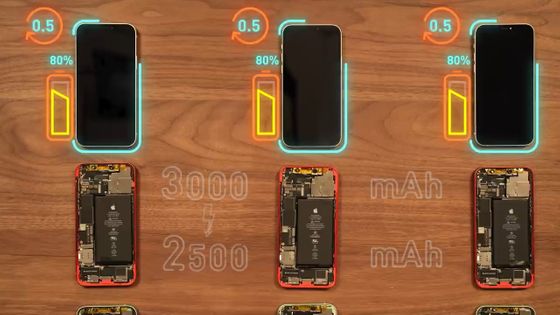
If the group that charges and discharges between 30% and 80% has the least battery loss, then keeping your smartphone's battery level between 30% and 80% will help protect your battery.

Finally, a control iPhone 12 was also prepared, which was left uncharged and its battery capacity was measured only at the beginning and end of every experimental cycle.
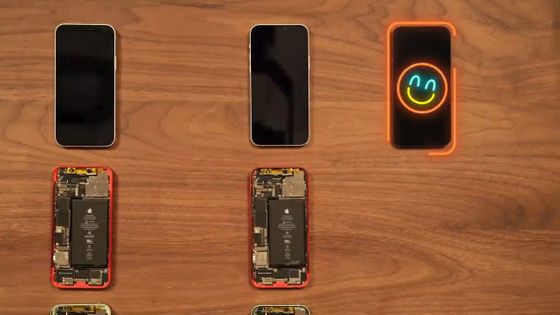
In addition, HTX Studio conducted the same experiment with Android smartphones, with the fast charging group using a 120W charging standard and the slow charging group using an 18W charging standard.

All smartphones used in the experiment were purchased from official stores, and HTX Studio conducted the experiment as a completely independent third party without contacting any brands.
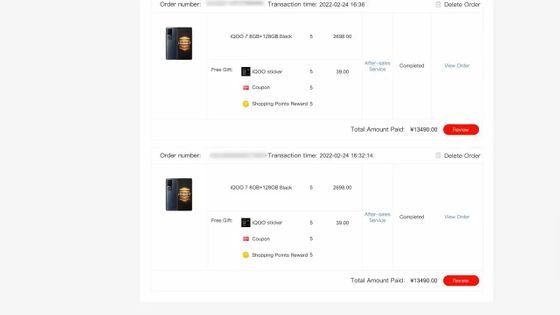
To give you an idea of how long the test took, HTX Studio took a time-lapse video while growing a plant near the phone during the test.
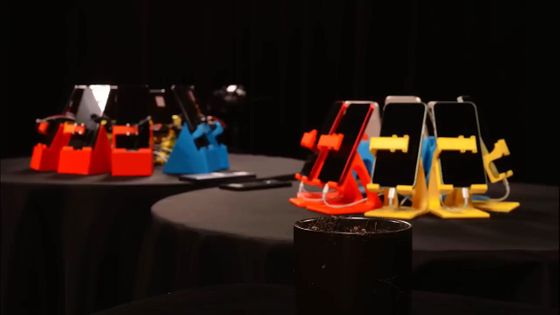
Plants germinate.
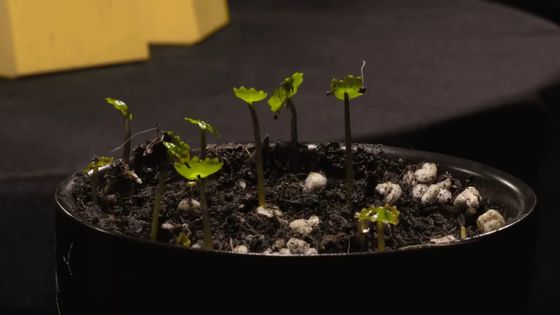
While the plant grows, the smartphone continues to go through a cycle of charging and discharging.

The charge/discharge cycle does not stop even when the plant wilts.
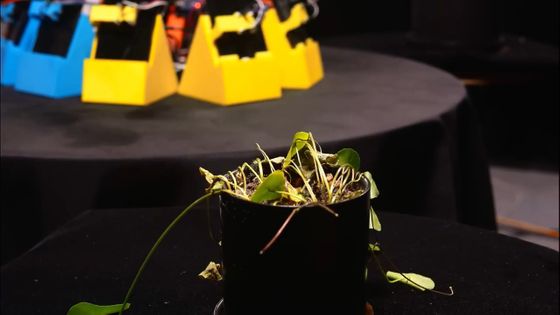
Even though the plants died, the experiment continued.
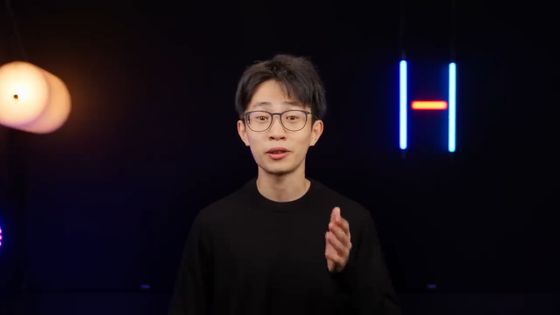
After 167 days of testing, all smartphones had completed their charge-discharge cycles.
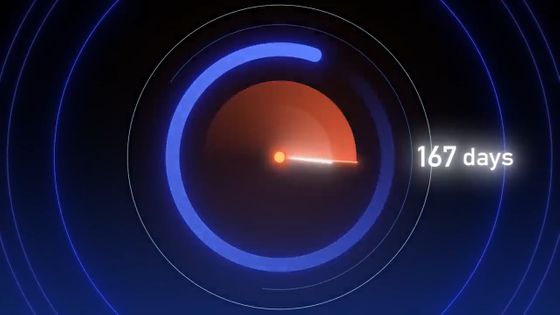
On the iPhone 12, the slow charging group lost 11.8% of its battery capacity, while the fast charging group lost 12.3% - a difference of just 0.5%.
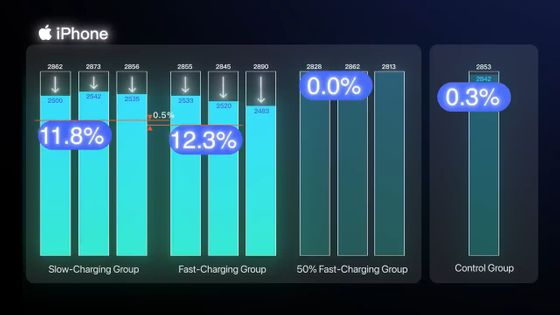
For Android smartphones, the slow charging group lost 8.8% of their battery, while the fast charging group lost 8.5%, again a small difference.
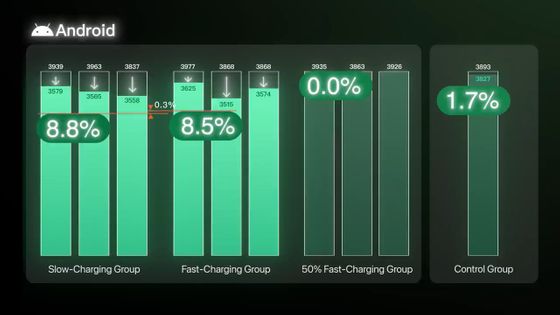
This means that even after 500 charge/discharge cycles, there will be no noticeable difference between fast charging and slow charging.
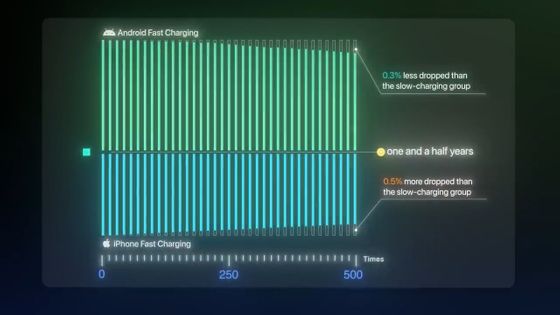
In the group that kept the battery level between 30% and 80%, the iPhone 12's battery loss was only 8.3%, 4% less than the fast charging group.
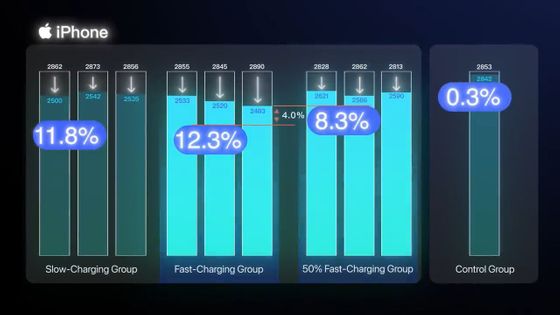
For Android smartphones, the group that kept their battery between 30% and 80% lost 6.0% battery, which was 2.5% less than the fast charging group.
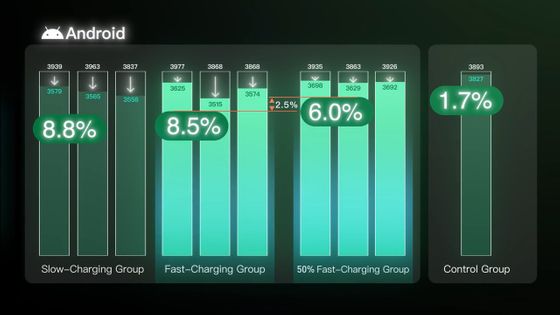
Therefore, HTX Studio concluded that 'maintaining the battery level between 30% and 80% helps reduce battery loss,' but pointed out that the improvement effect is limited.
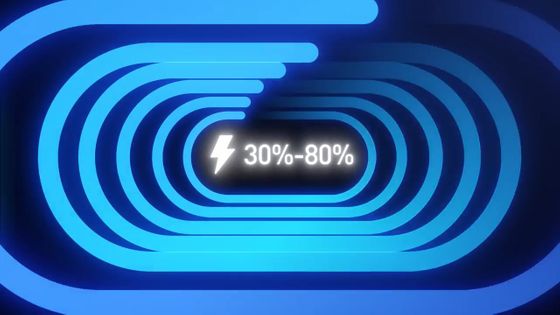
There is also a theory that 'keeping your smartphone constantly charged is bad for the battery,' and Apple also advises against storing it charged for long periods of time.

HTX Studio tested this on six iPhone 12s, and found that after a week of testing, there was no difference in battery capacity compared to when the device was left uncharged. This means that battery degradation caused by leaving the device on charge is a long-term process.
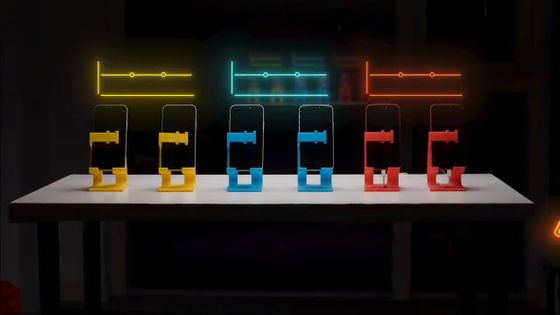
HTX Studio advised, 'The best way to charge your smartphone is to do what you love. Don't overthink it. Don't trade your mental energy for a little battery life.'

HTX Studio also tested how different battery capacities affect smartphone usage, testing iPhone 12s with battery capacities of 94%, 89%, 85%, and 81%, as well as iPhone Xs with battery capacities of 77%.

After four hours of continuous use, the battery level was 39% for an iPhone 12 with 94% battery capacity, 41% for an iPhone 12 with 89% battery capacity, 33% for an iPhone 12 with 85% battery capacity, and 26% for an iPhone 12 with 81% battery capacity.

The iPhone X, with 77% battery capacity, apparently shut down after 3 hours and 52 minutes.
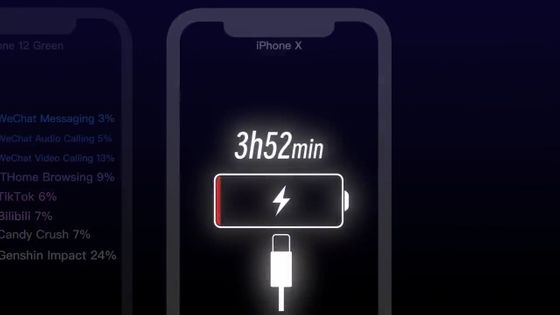
When we replaced the battery and performed the same test, the improvement in battery life after four hours was greater the lower the battery capacity before replacement.

HTX Studio said that you start to feel the battery life shortening when the battery capacity drops to around 85%, and that you should replace the battery when it drops to around 80%.
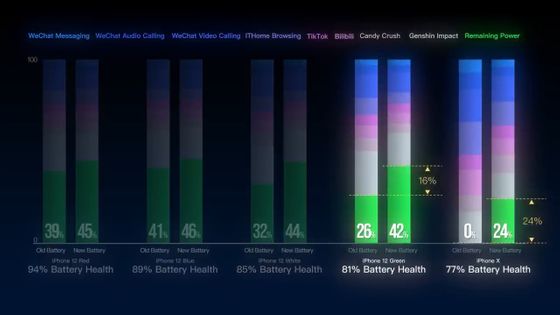
Additionally, smartphones begin to throttle their processing speed when the battery is low, and the lower the battery capacity, the sooner this slowdown begins.

For example, an iPhone with 85% battery capacity will throttle at 11% battery remaining, whereas a new battery won't throttle until 5% battery remaining.
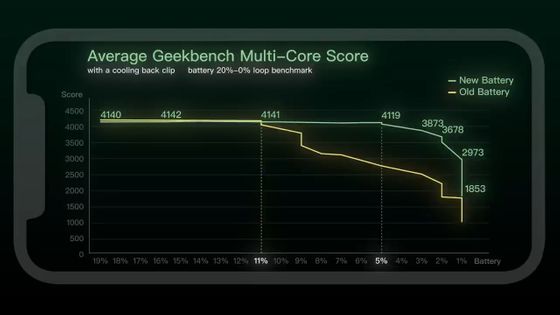
All of the smartphones used in this experiment had new batteries and were given to viewers as gifts.
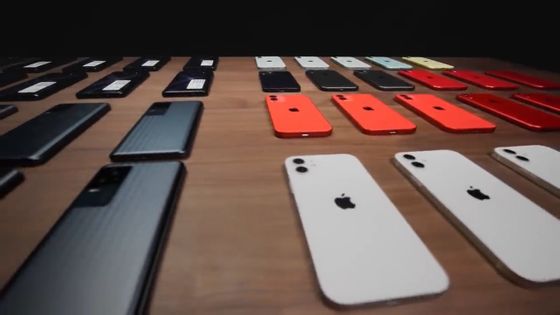
Related Posts:
in Video, Smartphone, Posted by log1h_ik

